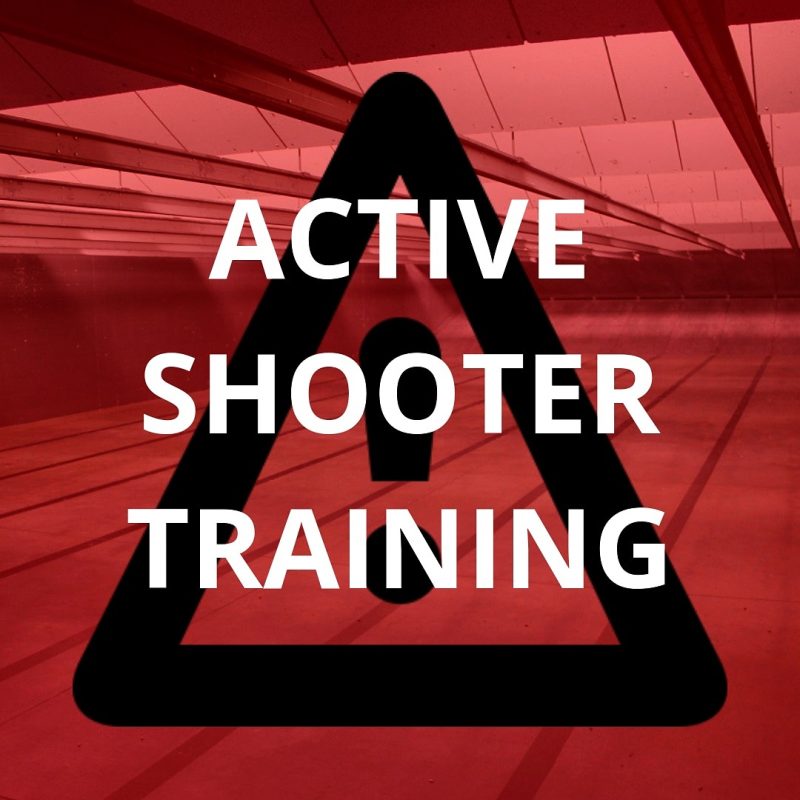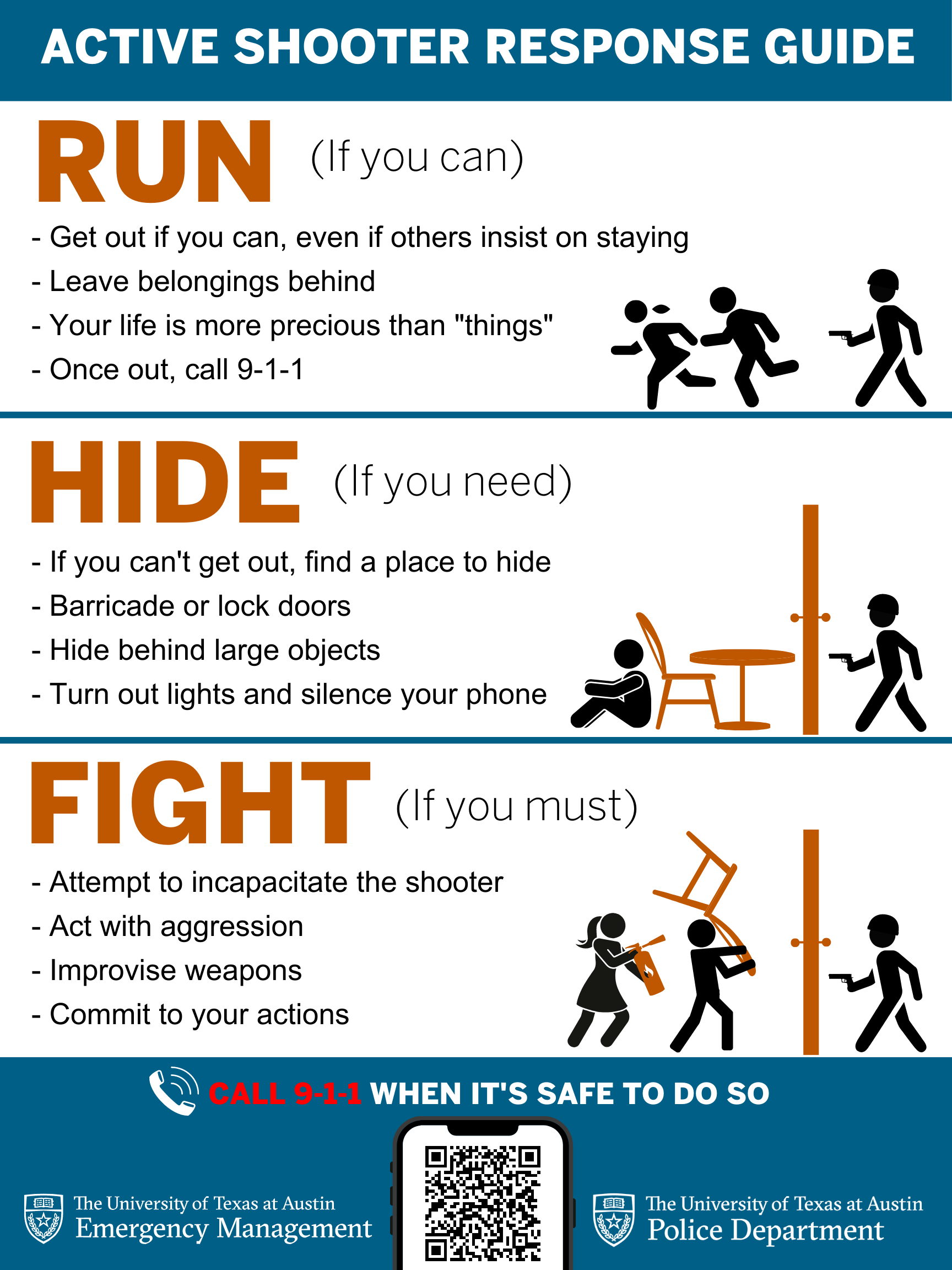How Active Shooter Training Enhances Emergency Reaction Readiness
How Active Shooter Training Enhances Emergency Reaction Readiness
Blog Article
Discovering the Key Parts and Purposes of Effective Active Shooter Training Programs
Active shooter training programs are vital in furnishing individuals and organizations with the required skills to react properly to possible hazards. As we check out the ins and outs of these training programs, it ends up being apparent that understanding their thorough nature is vital to boosting security steps and feedback capacities.
Importance of Energetic Shooter Training
Energetic shooter training programs are important for improving preparedness and reaction despite prospective risks. These programs aim to outfit individuals, organizations, and areas with the understanding and abilities required to properly react to energetic shooter scenarios. The enhancing frequency and extent of such events underscore the relevance of positive measures, as timely and informed feedbacks can dramatically alleviate harm.
Additionally, active shooter training promotes a culture of safety and security and understanding within establishments, whether they be institutions, workplaces, or public locations. Participants learn to identify early caution signs and recognize the relevance of communication and synergy during emergency situations. This training not just stresses private security but also advertises a cumulative responsibility to secure others.
Additionally, these programs can assist relieve the stress and anxiety and anxiety that typically come with discussions regarding prospective threats. By supplying structured assistance and sensible strategies, individuals obtain confidence in their capability to react suitably. Ultimately, the value of energetic shooter training depends on its prospective to conserve lives, reduce injuries, and cultivate a prepared and durable area with the ability of facing unanticipated obstacles.
Key Components of Training Programs
Efficient energetic shooter training programs commonly incorporate several essential components developed to prepare individuals for real-world scenarios. The first component is comprehensive education on the nature of active shooter occurrences, consisting of data, study, and mental elements that influence assailants. This theoretical structure is crucial for fostering understanding and understanding amongst individuals.
Following, programs usually consist of training on individual precaution, highlighting the "Run, Hide, Fight" approach. Participants discover just how to evaluate their atmosphere, make quick decisions, and take appropriate actions throughout a situation. Furthermore, the addition of reliable interaction abilities is crucial, as individuals need to comprehend how to report incidents and share vital information with police.
Another essential component is the participation of legislation enforcement or safety and security experts, who provide understandings right into tactical reactions and the importance of participation throughout a dilemma. Programs should resolve the mental consequences of an energetic shooter circumstance, offering approaches for coping and recovery.
Finally, ongoing training and refresher course programs are critical to make certain that understanding continues to be present and participants feel great in their capabilities. Together, these crucial components develop an all-around training program that outfits individuals to react efficiently to an energetic shooter event.
Realistic Situation Simulations
Practical scenario simulations are a vital facet of energetic shooter training programs, providing participants with the chance to participate in hands-on practice that mirrors potential real-life circumstances. These simulations improve the training experience by developing an immersive environment where individuals can apply theoretical understanding in functional setups.
Through the use of role-playing, mock situations, and specialized training centers, individuals experience the prompt obstacles and stress factors connected with an active shooter incident. This technique of training promotes quick decision-making, team effort, and the application of safety protocols under pressure. It allows responders to establish vital abilities such as situational understanding, danger analysis, and reliable discharge treatments.
Additionally, reasonable simulations aid to recognize possible weak points in individuals' feedbacks, making it possible for instructors to supply targeted comments and enhance overall preparedness. The incorporation of differing circumstances, consisting of various places and assaulter profiles, additionally enhances the training experience, guaranteeing that participants are well-equipped to handle navigate to these guys a variety of potential situations.
Inevitably, these simulations offer not only to instruct yet additionally to develop confidence amongst individuals, promoting a feeling of preparedness that is necessary for efficient emergency action in the face of an energetic shooter hazard.
Interaction Methods in Training
Clear communication is essential in energetic shooter training programs, as it directly influences the effectiveness of feedback initiatives during a situation. active shooter training. Training participants must recognize the protocols and treatments that will guide their activities if confronted with an energetic shooter circumstance. Developing clear lines of interaction ensures that all people involved can pass on info promptly and precisely

Furthermore, training programs need to emphasize the relevance of energetic listening. Participants have to be educated to translate and respond to details successfully, reducing misconceptions that might result in dangerous scenarios. Regular responses sessions post-training can likewise refine interaction methods, ensuring that all individuals feel encouraged to share their experiences and tips for improvement. Inevitably, efficient interaction techniques are essential for preparing people to respond emphatically and cohesively in the face of an energetic shooter incident.

Psychological Readiness Strategies
Mental readiness techniques are significantly recognized as essential parts of energetic shooter training programs - active shooter training. These techniques aim to outfit individuals with the psychological strength necessary to react effectively in high-stress situations. By promoting a state of mind attuned to possible risks, participants can better handle worry, anxiety, and complication during critical cases
Secret psychological readiness techniques consist of scenario-based training and anxiety inoculation workouts. Scenario-based training immerses participants in sensible simulations that mimic the turmoil of an energetic shooter event, enabling them to practice decision-making under stress. This exposure assists look what i found build experience with emergency procedures, enhancing second-nature responses.
Tension vaccination involves progressive direct exposure to stress-inducing scenarios, allowing people to create coping mechanisms. This can consist of breathing exercises, visualization methods, and cognitive restructuring to reframe adverse thoughts. By incorporating these strategies, training programs can cultivate a feeling of confidence and control, which is important in situation situations.
In addition, post-incident psychological support is important to resolve the emotional consequences of an energetic shooter occasion. Incorporating mental wellness resources into training programs not only prepares people for prompt reactions yet likewise advertises lasting psychological well-being, eventually adding to a much safer and a lot more resistant setting.
Conclusion
In conclusion, effective active shooter training programs are vital for improving preparedness and action abilities when faced with prospective risks. By integrating critical elements such as realistic situation simulations, interaction strategies, and mental readiness strategies, these programs outfit people and companies with the needed abilities to browse high-stress scenarios. Inevitably, a thorough strategy to training cultivates strength and advertises a society of safety, thereby adding to the general safety and security of communities in the event of an energetic shooter incident.
Report this page